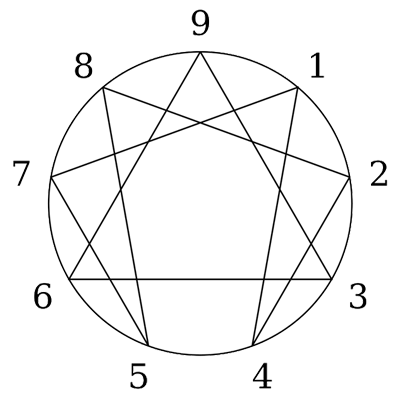If you’ve ever participated in a team-building corporate retreat, you’ve likely had exposure to one or more personality typing systems. These tests and associated exercises encourage self-awareness along with an appreciation for differences among colleagues. I found them interesting, although I was never entirely sure that we used our insights to the greatest effect once the retreats were over.
Over the past few years, I’ve had renewed interest in this line of inquiry. In my little corner of the Pacific Northwest, we’re blessed to have one of the country’s premier teachers of the enneagram, Dale Rhodes. He is the founder and chief guru at Enneagram Portland. He curates wonderful content while attracting an animated and engaged community for embodied learning. After all, what better way to learn about different personality types than to see them in action, hear their stories, and profit from their self-reflection?
Before I get to why I study the enneagram, it’s probably useful to give a brief primer on what it is. The word itself comes from the Greek ennéa meaning nine and gram meaning something written or drawn. It refers to the nine distinctive personality types articulated by Bolivian mystic Oscar Ichazo (via meditation on ancient texts) and developed by Chilean born psychiatrist Claudio Naranjo. Interviews with countless individuals of each type have contributed to a detailed understanding of traits and behaviors. The nine types are represented as points on a continuous circle with connections to two other points (deemed “stress” and “security” points) as well as their neighboring points (deemed “wings”).
There are lots of books, websites, blog posts, podcasts, et al on the subject, along with variations on how each pundit embraces the teachings of the enneagram. For the sake of brevity, here are descriptors that I use to capture the nine types:
 The Perfectionist (a.k.a. Reformer or Idealist)
The Perfectionist (a.k.a. Reformer or Idealist)- The Connector (a.k.a. Helper or Giver)
- The Performer (a.k.a. Achiever or Motivator)
- The Individualist (a.k.a. Romantic or Sensitive Soul)
- The Observer (a.k.a. Thinker or Investigator)
- The Security Seeker (a.k.a. Planner or Loyal Skeptic)
- The Enthusiast (a.k.a. Epicure or Generalist)
- The Protector (a.k.a. Challenger or Commander)
- The Peacemaker (a.k.a. Mediator or Team Player)
Each of these types has three subtypes or “instincts”:
- A Self-Preservation instinct seeks well-being by focusing on issues related to survival, material security, safety, and marshaling resources.
- A One-to-One (or Sexual) instinct seeks well-being by forging quality relationships with specific individuals; they are attracted to intense experience.
- A Social instinct seeks well-being through membership and relationship in social groups.
These elements combine to produce 27 distinct personas that differ in what garners attention, what attracts energy, what manifests as strengths and weaknesses, what causes satisfaction and stress, how they communicate, etc. The model has been further developed to characterize high-functioning versus low-functioning individuals within each type. I’ll provide a little deeper dive into these types in the coming weeks.
Why do I study the enneagram?
Self-Awareness. The enneagram creates space to take stock of my behavior patterns and think deeply about why I do what I do. While my patterns don’t align chapter-and-verse with my dominant archetype (a Social 9), there’s enough commonality to shine new light on what makes me tick, what draws my attention, what pushes my buttons, and what sends me to my happy place. I see echoes of all of the other types in my persona and have really benefited from learning about them.
Personal Transformation. In concert with self-awareness, the enneagram suggests pathways to move out of the personality “ruts” that are holding me back and move into a fuller expression of my authentic self. Armed with insights about my thoughts, emotions, and actions, I can make better choices and forge more useful habits.
Improved Interpersonal Relationships. Doing a deep dive on each of the 9 types and 27 subtypes lets me see the world through other people’s eyes. I appreciate the logic behind their approaches to life. I have a better appreciation for what lights them up and what drives them nuts. It elevates my compassion for others and (hopefully) encourages me to behave in ways that maximize positive engagement.
Friendship! The collective of folks I’ve met through Enneagram Portland are really cool people. I’ve had delightful one-on-one get-togethers with classmates from the Enneagram in Literature/Film course and fabulous group discussions in our monthly sessions. In fact, I loved the class so much that I’m back for a second round with all new readings!
Recommended Reading:
- Beatrice Chestnut, PhD – The Complete Enneagram: 27 Paths to Greater Self-Knowledge, ©2013
- Don Richard Riso and Russ Hudson – The Wisdom of the Enneagram: The Complete Guide to Psychological and Spiritual Growth for the Nine Personality Types, ©1999
- Helen Palmer – The Enneagram: Understanding Yourself and the Others in Your Life, ©1991